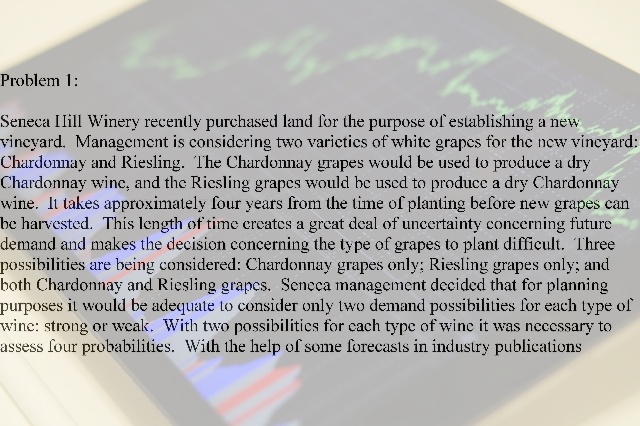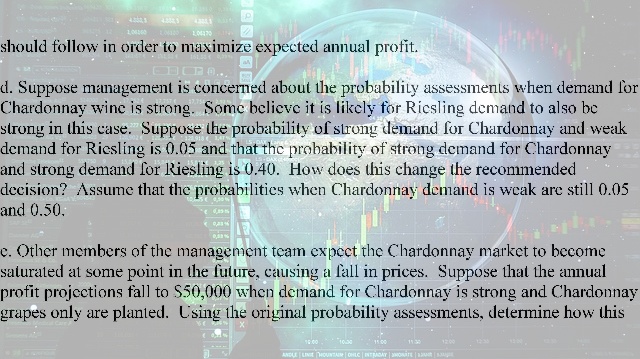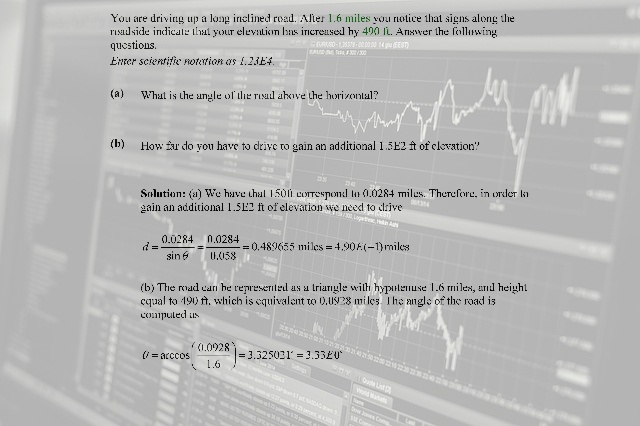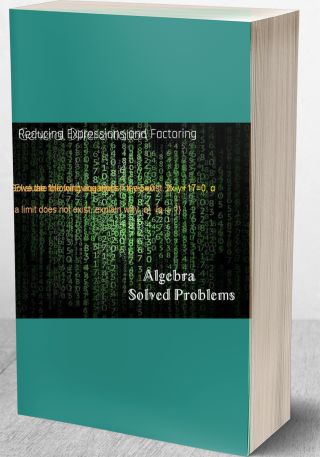Solution: Seneca Hill Winery recently purchased land for the purpose - #80039
Problem 1:
Seneca Hill Winery recently purchased land for the purpose of establishing a new vineyard. Management is considering two varieties of white grapes for the new vineyard: Chardonnay and Riesling. The Chardonnay grapes would be used to produce a dry Chardonnay wine, and the Riesling grapes would be used to produce a dry Chardonnay wine. It takes approximately four years from the time of planting before new grapes can be harvested. This length of time creates a great deal of uncertainty concerning future demand and makes the decision concerning the type of grapes to plant difficult. Three possibilities are being considered: Chardonnay grapes only; Riesling grapes only; and both Chardonnay and Riesling grapes. Seneca management decided that for planning purposes it would be adequate to consider only two demand possibilities for each type of wine: strong or weak. With two possibilities for each type of wine it was necessary to assess four probabilities. With the help of some forecasts in industry publications management made the following probability assessments.
Riesling Demand
Chardonnay Demand Weak Strong
Weak 0.05 0.50
Strong 0.25 0.20
Revenue projections show an annual contribution to profit of $20,000 if Seneca Hill only plants Chardonnay grapes and demand is weak for Chardonnay wine, and $70,000 if they only plant Chardonnay grapes and demand is strong for Chardonnay wine. If they only plant Riesling grapes, the annual profit projection is $25,000 if demand is weak for Riesling grapes and $45,000 if demand is strong for Riesling grapes. If Seneca plants both types of grapes, the annual profit projections are shown in the following table.
State of Nature
Chardonnay Demand Weak Strong
Weak $22,000 $40,000
Strong $26,000 $60,000
a. What is the decision to be made, what is the chance event, and what is the consequence? Identify the alternatives for the decisions and the possible outcomes for the chance events.
b. Develop a decision tree.
c. Use the expected value approach to recommend which alternative Seneca Hill Winery should follow in order to maximize expected annual profit.
d. Suppose management is concerned about the probability assessments when demand for Chardonnay wine is strong. Some believe it is likely for Riesling demand to also be strong in this case. Suppose the probability of strong demand for Chardonnay and weak demand for Riesling is 0.05 and that the probability of strong demand for Chardonnay and strong demand for Riesling is 0.40. How does this change the recommended decision? Assume that the probabilities when Chardonnay demand is weak are still 0.05 and 0.50.
e. Other members of the management team expect the Chardonnay market to become saturated at some point in the future, causing a fall in prices. Suppose that the annual profit projections fall to $50,000 when demand for Chardonnay is strong and Chardonnay grapes only are planted. Using the original probability assessments, determine how this change would affect the optimal decision.
Problem 2:
Hale's TV Productions is considering producing a pilot for a comedy series in the hope of selling it to a major television network. The network may decide to reject the series, but it may also decide to purchase the rights to the series for either one or two years. At this point in time, Hale may either produce the pilot and wait for the network's decision or transfer the rights for the pilot and series to a competitor for $100,000. Hale's decision alternatives and profits (in thousands of dollars) are as follows:
State of Nature
Decision Alternative Reject, S1 1 Year, S2 2 Years, S3
Produce pilot, d1 -100 50 150
Sell to competitor, d2 100 100 100
The probabilities for the states of nature are P(s1) = 0.20, P(s2) = 0.30, and P(s3) = 0.50. For a consulting fee of $5000, an agency will review the plans for the comedy series and indicate the overall chances of a favorable network reaction ot the series Assume that the agency review will result in a favorable (F) or an unfavorable (U) review and that the following probabilities are relevant.
P(F) = 0.69 P(s1 I F) = 0.09 P(s1 I U) = 0.45
P(U) = 0.31 P(s2 I F) = 0.26 P(s2 I U) = 0.39
P(s3 I F) = 0.65 P(s3 I U) = 0.16
a. Construct a decision tree for this problem.
b. What is the recommended decision if the agency opinion is not used? What is the expected value?
c. What is the expected value of perfect information?
d. What is Hale's optimal decision strategy assuming the agency's information is used?
e. What is the expected value of the agency's information?
f. Is the agency's information worth the $5000 fee? What is the maximum that Hale should be willing to pay for the information?
g. What is the recommended decision?
Price: $40.95
Solution: The downloadable solution consists of 10 pages, and 1112 words
Deliverable: Word Document and pdf
and pdf
Deliverable: Word Document
 and pdf
and pdf





